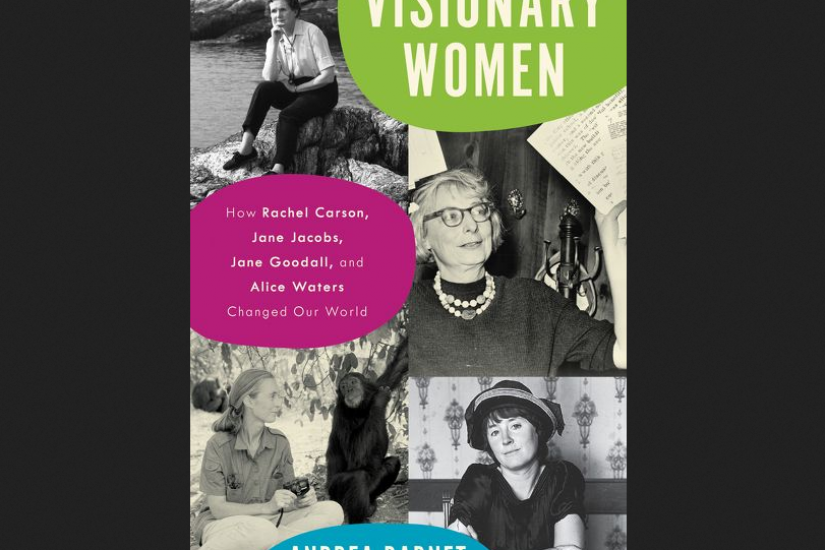Since I was born during the short window between John F. Kennedy’s election and inauguration, I can claim with technical accuracy to be a child of the ’60s. True, my main accomplishment over the next 10 years was learning to ride a bike, but the iconography of the decade is so inescapable that I’ve always felt as if I actually knew what it was all about: raised fists, civil-rights and antiwar marches, hippies, the Beatles, the hair—an epoch of resistance.
Andrea Barnet’s new biography of four women who helped shape that era rewrote that definition a little for me—or at least broadened it. One thing that unites Rachel Carson, Jane Jacobs, Jane Goodall, and Alice Waters is, of course, gender. But (perhaps in part because of that fact) what really makes them fit subjects for joint consideration is the idea they shared, which was in many ways quite new when they broached it in the ’60s: that the world, both natural and human, is not a series of mechanistic interactions but rather a web. “Into a blustery, all-male world of patriarchs and company men, technocrats and cold warriors,” Barnet writes, “walked four women who saw things differently and were unafraid to say so.”
Carson, Jacobs, Goodall, and Waters weren’t friends; they weren’t all of the same generation, and they worked in different fields. But where the men who had made the world of the 1950s saw “strict hierarchies and separations, they saw entities and connections, the world as a holistic system…they saw movement and flow, evolution and process.” Indeed, Barnet tells us, all four “intuitively grasped the overarching idea of ‘connection,’ which is the basis of what we now call ‘web’ or ‘systems’ thinking. If these insights seem self-evident today, it is only because of how thoroughly we have internalized their essence.” Their ideas “not only turned out to be prescient, but culture-changing—the catalyst to a radical shift in consciousness.” There were others—men and women both—who helped push us in the same direction, but these four help us better understand the nature, and the beauty, of that shift.
